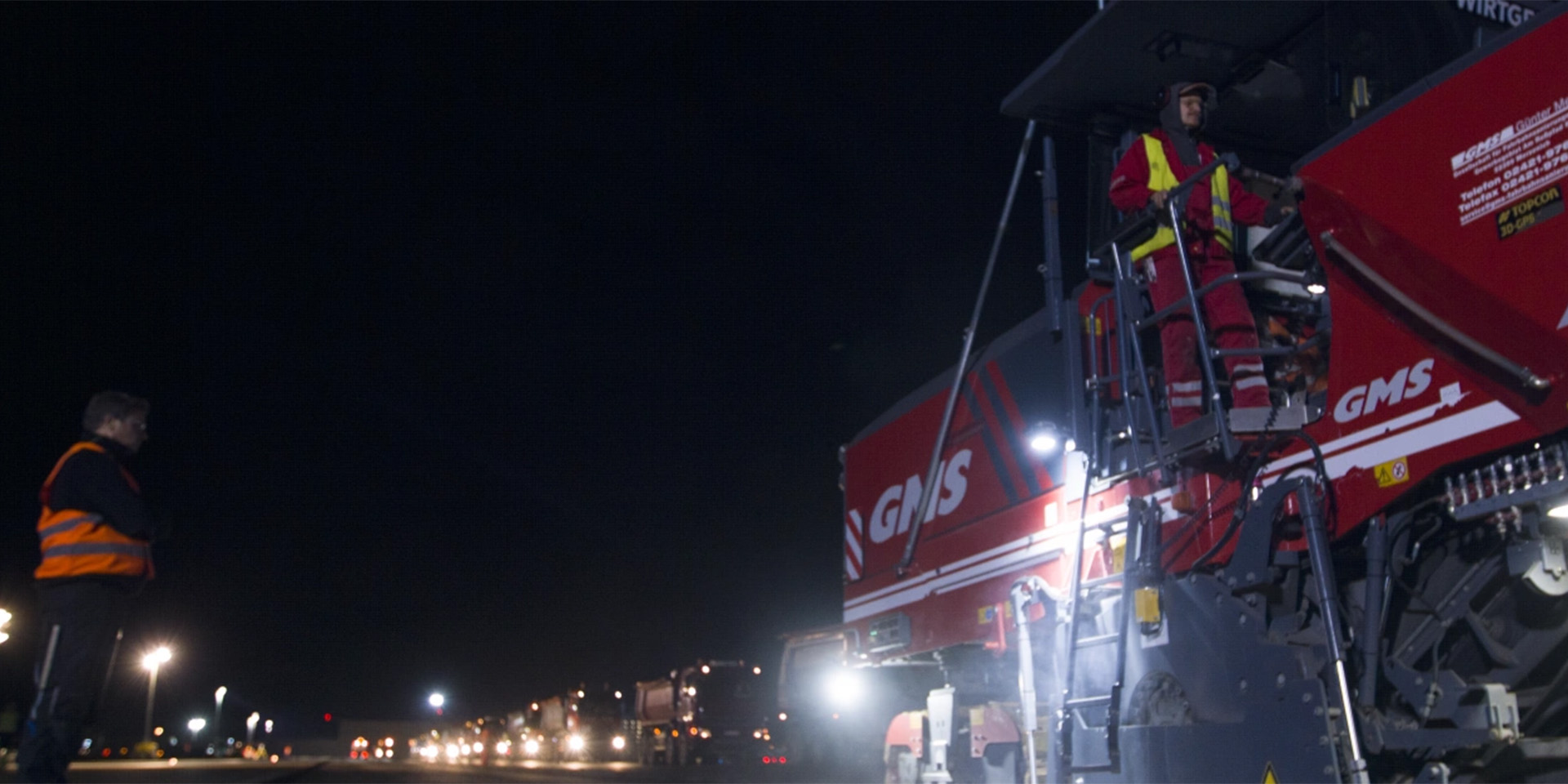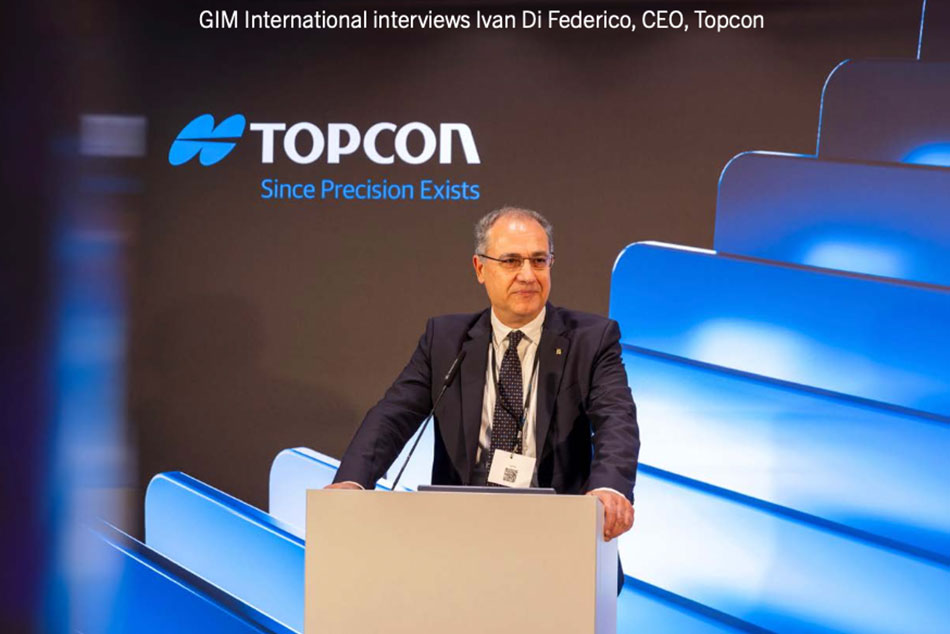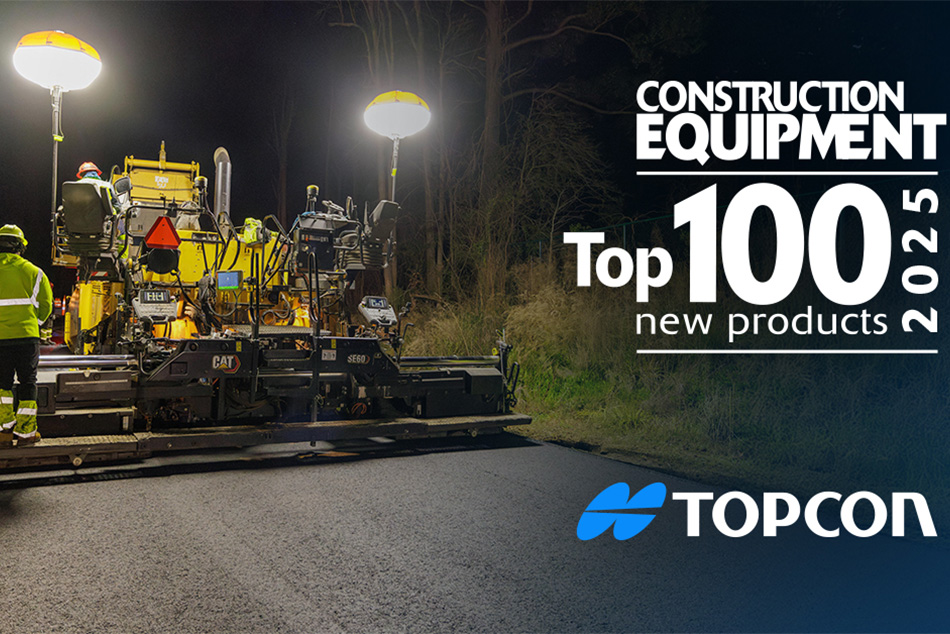Frankfurt Airport is one of the greatest hubs of international transport, so there’s always a lot going on. It is Germany’s largest and busiest airport, and one of the largest in Europe. Around 60 million passengers are welcomed here every year. “On a busy day, there are more than 1400 landings and take-offs,” says Axel Konrad. He is a project manager for Fraport AG, the airport management company.
All this activity hides a great challenge. Of course, Frankfurt Airport wants to keep all of its infrastructure in optimal condition. But with so many passengers passing through, there isn’t much time to do maintenance work.
In this case, it’s runway 18 West that’s in need of maintenance.
Bumpy ride
“This runway is used exclusively for departures,” says Konrad. “60% of all departures in Frankfurt take off from runway 18 West. That’s more than 450 take-offs per day, which means that every 2.5 minutes another plane is leaving. Closing off such a vital runway for maintenance is a big challenge for us. That’s always a lot of work.”
So-called ‘ripples’ have appeared on the surface of the runway. “The plane has a bumpy ride due to these ripples. Our goal is to solve this issue. It’s important to us that the passengers on the plane have a comfortable experience.”
“It’s a really big challenge for us to get this done within 120 hours. We’re talking about refurbishing a 1500 meter runway.”
Axel Konrad, project leader at Fraport AG
Saving time on milling
The time frame for this project is short. Konrad: “It’s a really big challenge for us to get this done within 120 hours. We’re talking about refurbishing a 1500 meter runway.”
A few weeks before the runway was made available for the refurbishment, the team performed a scan of the surface at driving speed. “Thanks to this 3D survey we’ve made of the site, we can accurately estimate how much asphalt we’ll need,” Konrad tells us. “That’s a big advantage when it comes to planning.”
Those 120 hours are full of milling and paving magic. The team is using a new method of working. “As the largest airport in Germany, you want to be technologically innovative. You’re willing to try new things, and that’s what we are doing here. It’s working out very well, we’re saving a lot of time on the milling. Before, we used to spray the milling height onto the asphalt, but you just can’t do it that way anymore.”
“It’s always a challenge to combine construction work with all the different aspects of an airport,” says Konrad “Of course, we try to work sustainably, optimizing matters to reduce our impact on the environment. For instance, we will re-use some of the old asphalt to resurface the runway.”
“Thanks to the 3D survey we’ve made of the site, we can estimate accurately how much asphalt we’ll need. That’s a big advantage when it comes to planning.”
Axel Konrad, project leader at Fraport AG
Less error, higher accuracy
“The 18 West runway is very important to Frankfurt Airport,” Konrad emphasizes. “That’s why we need technologies like SmoothRide.”
Six large milling machines have been equipped with SmoothRide’s RD-MC machine control. “SmoothRide offers advantages for highways, major roads, and large surfaces,” says Klaus Kormann. He is the site manager for GMS, the company that mills concrete and asphalt at Frankfurt Airport.
“Of course, we need clean data. That’s the main thing. That lack of error is what makes things easier for us. Another big advantage is that we don’t need an external surveyor for surveying beforehand and assistance during the project. This reduces costs for larger customers,” says Kormann. And, last but not least: “It’s easy to use for the experienced machine operators working on the project. For them, nothing has really changed."
This is confirmed by Christian Schmidt, who has been operating machines in road construction projects for over twelve years. “SmoothRide is easier to use than its predecessor,” he says. “It takes only one person to operate. The device makes it significantly easier to do the job accurately.”
















